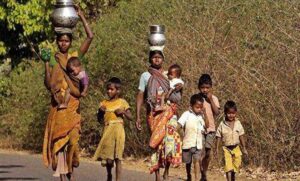GS2 – Social Sector

Context
The release of the Household Consumption Expenditure Survey (HCES) 2023–24 by NSO in January 2025 has sparked debate about the adequacy of current poverty measures. The Thali Index offers an alternative rooted in real food accessibility.
Limitations of Calorie-Based Poverty Metrics
- Cultural Disconnect:
National calorie norms overlook regional food habits and diverse dietary cultures like the Indian thali. - Non-Food Expenditure Ignored:
Spending on housing, healthcare, transport, and education reduce budget left for food, affecting real nutrition. - Price Variation Ignored:
Uniform calorie-based benchmarks ignore state-wise food price differences, distorting poverty estimations.
The Thali Index: A Grounded Alternative
- Developed by CRISIL; evaluates the cost of a basic vegetarian thali (₹30).
- Includes food accessed via the Public Distribution System (PDS) and other welfare schemes.
- Measures how many balanced meals a person can afford — a practical way to assess food security.
Why India Needs a New Poverty Lens
- Widespread Deprivation:
In 2023–24, 40% of rural and 10% of urban Indians couldn’t afford two thalis per day—a sign of deep food insecurity. - Mismatch with Official Data:
World Bank and SBI data claim poverty is below 5%, but ground-level surveys expose hunger and malnutrition. - Sharper Insights through Food Metrics:
Food is non-negotiable—actual food expenditure is a more reliable indicator of hardship than general consumption data.
Implications for Subsidy Reform
- Better Targeting:
Top income deciles consume twice as many thalis as bottom deciles without subsidy, suggesting scope for rationalisation. - Focus on the Deprived:
Rather than removing food subsidies altogether, restructure them to focus on the most food-insecure households. - Graded Subsidy Model:
Implement a tiered subsidy based on income or thali affordability to reduce leakages and ensure nutritional adequacy.




